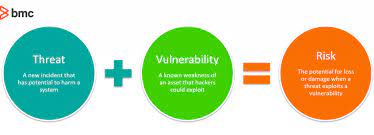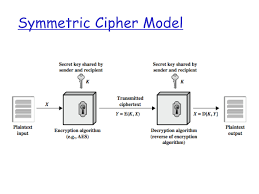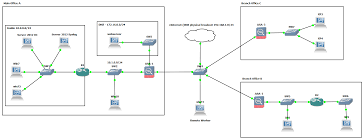The Importance of Network Firewall Security
Network firewall security is a critical element in safeguarding your organisation’s digital assets from cyber threats. A network firewall acts as a barrier between your internal network and external networks, such as the internet, to monitor and control incoming and outgoing traffic based on predetermined security rules.
One of the primary functions of a network firewall is to prevent unauthorised access to your network by blocking potentially harmful traffic while allowing legitimate data to pass through. By establishing rules and policies, a firewall can effectively filter out malicious content, such as malware, viruses, and hacking attempts, before they reach your systems.
Furthermore, network firewalls play a crucial role in enforcing security policies within an organisation. By segmenting the network into different zones and applying access controls, firewalls help prevent unauthorised users from accessing sensitive information or resources. This not only protects confidential data but also ensures compliance with regulatory requirements.
Another key benefit of network firewall security is the ability to monitor and log network traffic for analysis and auditing purposes. By keeping detailed records of inbound and outbound communications, organisations can track suspicious activities, investigate security incidents, and improve overall network visibility.
As cyber threats continue to evolve in complexity and sophistication, maintaining a robust network firewall security posture is essential for protecting against potential breaches and data loss. Regularly updating firewall rules, monitoring alerts for unusual activity, and conducting periodic security assessments are crucial steps in ensuring the effectiveness of your network defences.
In conclusion, investing in strong network firewall security measures is paramount for safeguarding your organisation’s digital infrastructure from cyber threats. By implementing best practices in firewall configuration, monitoring, and management, you can enhance the resilience of your network environment and mitigate risks associated with today’s dynamic threat landscape.
9 Essential Tips for Enhancing Your Network Firewall Security
- Regularly update your firewall software to ensure it has the latest security patches.
- Configure your firewall to only allow necessary incoming and outgoing traffic.
- Implement strong password policies for accessing and configuring the firewall.
- Enable logging and monitoring features on your firewall to track network activity.
- Use intrusion detection/prevention systems in conjunction with your firewall for added security.
- Deny all, allow some” approach is recommended when setting up firewall rules.
- Regularly review and audit your firewall rules to ensure they are up-to-date and relevant.
- Segment your network into different zones with varying levels of trust and apply appropriate firewall rules.
- Consider using application-layer firewalls that can inspect traffic at a deeper level than traditional firewalls.
Regularly update your firewall software to ensure it has the latest security patches.
To maintain robust network firewall security, it is imperative to regularly update your firewall software to incorporate the latest security patches. By ensuring that your firewall is up-to-date with the most recent patches, you can address vulnerabilities and protect your network from emerging threats. These updates often include fixes for known security weaknesses and help strengthen the overall resilience of your firewall against potential cyber attacks. Keeping your firewall software current is a proactive measure that enhances the effectiveness of your security defences and helps safeguard your organisation’s digital assets.
Configure your firewall to only allow necessary incoming and outgoing traffic.
Configuring your firewall to only permit essential incoming and outgoing traffic is a fundamental tip in enhancing network firewall security. By setting up precise rules that restrict access to only required services and applications, you can significantly reduce the attack surface exposed to potential threats. This proactive approach ensures that malicious entities are unable to exploit unnecessary network pathways, thereby strengthening the overall resilience of your network defences. Prioritising the restriction of non-essential traffic not only bolsters security but also optimises network performance by minimising potential bottlenecks and resource consumption.
Implement strong password policies for accessing and configuring the firewall.
To enhance network firewall security, it is crucial to implement strong password policies for accessing and configuring the firewall. By enforcing complex passwords that include a combination of letters, numbers, and special characters, organisations can significantly reduce the risk of unauthorised access to critical firewall settings. Regularly updating passwords and restricting access to only authorised personnel further strengthens the overall security posture, ensuring that the firewall remains a robust defence against cyber threats. By prioritising strong password practices, organisations can fortify their network infrastructure and safeguard against potential breaches and vulnerabilities.
Enable logging and monitoring features on your firewall to track network activity.
Enabling logging and monitoring features on your firewall is a crucial tip for enhancing network firewall security. By tracking network activity through detailed logs and real-time monitoring, you can gain valuable insights into potential security threats and suspicious behaviour. This proactive approach allows you to identify and respond to security incidents promptly, helping to strengthen your overall cybersecurity posture. Regularly reviewing firewall logs and monitoring network traffic patterns can provide visibility into any anomalies or unusual activities, enabling you to take appropriate action to protect your network from potential breaches.
Use intrusion detection/prevention systems in conjunction with your firewall for added security.
To enhance the security of your network firewall, consider implementing intrusion detection/prevention systems in conjunction with your firewall. These systems work hand in hand to provide an additional layer of defence against potential threats. While firewalls monitor and control traffic based on predefined rules, intrusion detection/prevention systems analyse network traffic for suspicious activity and can actively block or alert on potential intrusions. By combining these technologies, you can strengthen your overall security posture and better protect your network from advanced cyber threats.
Deny all, allow some” approach is recommended when setting up firewall rules.
When configuring firewall rules for network security, adopting a “deny all, allow some” approach is highly recommended. This strategy involves setting the default rule to deny all incoming and outgoing traffic, except for specific exceptions that are explicitly permitted. By starting with a restrictive stance and selectively allowing only necessary traffic based on predefined criteria, organisations can significantly reduce the attack surface and minimise the risk of unauthorised access or malicious activity. This proactive approach to firewall rule management enhances control over network traffic and strengthens overall security posture against potential threats.
Regularly review and audit your firewall rules to ensure they are up-to-date and relevant.
Regularly reviewing and auditing your firewall rules is crucial in maintaining the effectiveness of your network security measures. By ensuring that your firewall rules are up-to-date and relevant, you can proactively identify and address any potential vulnerabilities or misconfigurations that may compromise the integrity of your network. This practice not only helps in strengthening your defences against emerging threats but also ensures that your firewall is optimally configured to protect your organisation’s digital assets from unauthorised access and malicious activities.
Segment your network into different zones with varying levels of trust and apply appropriate firewall rules.
To enhance network firewall security, it is advisable to segment your network into distinct zones with varying levels of trust and enforce appropriate firewall rules for each zone. By categorising network segments based on their security requirements and sensitivity of data, organisations can effectively control access between different areas of the network. This approach allows for granular control over traffic flow, ensuring that only authorised connections are permitted while restricting unauthorised access to critical resources. Implementing this strategy strengthens overall network security posture and minimises the impact of potential security breaches by containing threats within specific zones.
Consider using application-layer firewalls that can inspect traffic at a deeper level than traditional firewalls.
When enhancing network firewall security, it is advisable to consider the implementation of application-layer firewalls that offer a more advanced level of traffic inspection compared to traditional firewalls. By scrutinising data at a deeper level, application-layer firewalls can analyse the content and context of network traffic, providing greater protection against sophisticated cyber threats. This proactive approach enables organisations to detect and block malicious activities more effectively, strengthening their overall defence mechanisms and reducing the risk of potential security breaches.









